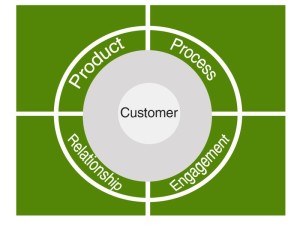
Customer centric internet business model
In simple a term, internet business model is all about how you plan to make money on the Internet.
It’s easy to say but hard to implement. It’s a critical aspect of many aspects in business that needs to be continuously tested in your target market.
If the choice of a business model is so vital for your business success or failure you will want to understand your options and how you can align it with your strategy.
Before talking about your internet business model options, let’s have a look at the strategy first.
Setting Your Strategy First
The ultimate goal of a business is to make more profits than average businesses. And in order to achieve the goal you must have the right strategy. So, let’s talk about your strategic choices.
According to Michael Porter two strategies to achieve cost and price advantages are operational effectiveness and strategic positioning.
Operational effectiveness is a common strategy among online businesses. But it can’t offer a sustainable operational advantage because the Internet relatively offers the same playing field for all players.
For this reason, going with the strategic positioning –doing things differently than competitors and delivering a unique value to customers– is a better option.
One way to apply the strategic positioning strategy is to deliver UNIQUE VALUE for a particular set of customers. And you can build a customer centric business by designing a process around the set of customers.
It means you will have to profile the customers, create a customer-oriented value proposition and customizing your services along the business process.
What Is A Customer Centric Strategy?
Customer centric strategy is the practical application of the strategic positioning strategy, mentioned above.
If you serve a particular set of customers you can design your business system around them. This way you can do differently than your competitors and thus, offer your customers unique value.
Being customer centric means getting to know about customers well and doing everything possible to give them what they want. It starts from building relationships with clients to using the knowledge about them to offer more goods and/or services.
The decision is strategic in a sense that it sets the method of doing business. The decision doesn’t focus on selling products to as many consumers as possible but it tries to maximize revenues by offering different products to existing customers.
You can’t change this strategy down the road without radically changing the way you do business.
Now, let’s take a look at what customer centric strategy has something to do with internet business model.
Your Internet Business Model Options
Once you design the way you do business it’s time to find your revenue sources and how you are going to make money. Here is a list of customer centric internet business models that you can apply for your small business:
1. Merchant model
This is the classic example of running a business online. You can build an electronic store to sell physical or digital products made by your company or other suppliers.
There are many e-commerce solutions for small business. Those services offer fully functional e-store packages that include hosting, website builder, merchant accounts and a facility for accepting online payment.
2. Subscription model
If you sell digital goods or online services you can set up a membership site that offers either premium information or web-based software and services.
It’s possible to charge anything from $10 to $500 per month for services such as web hosting or email marketing services. With no to low overheads you can get regular residual income, month after month.
3. Affiliate model
The affiliate or associate business model is as old as Amazon because it was the retail giant that made it popular.
As an affiliate you will have to create a website catering for a small niche market. You can do that by refering visitors of the website to those merchants offering relevant products for your niche.
In this affiliate business model your revenues come from commissions as a percentage of sales transactions.
4. Freemium model
This model is initially popular in the software industry but today you can find it in almost all products and services.
Freemium is a free plan of quality products/services. The free plan usually works like paid plans but with a limitation. You can entice new users for trying your products, for a limited time or with limited featured, by offering a free plan.
5. Others
There are other sources for small businesses to generate more revenue stream.
Selling stuff or products from your dropship business is one of them. This business model is less hassle than the e-commerce model, especially if you don’t have necessary resources for running a full-fledged e-store.
Aligning Your Business Model With Your Strategy
Those are a few examples of internet business models you can use for your start up. Which one is the right one for you?
There is no hard and fast rules for picking the best internet business model that is in alignment with a customer centric strategy. All you have to do is try one model or more, individually or in combination, and then apply what works for your business.
What to Do Next?
Already selected an internet business model to go with? Learn about the steps to starting an internet business in details and then choose your next step.